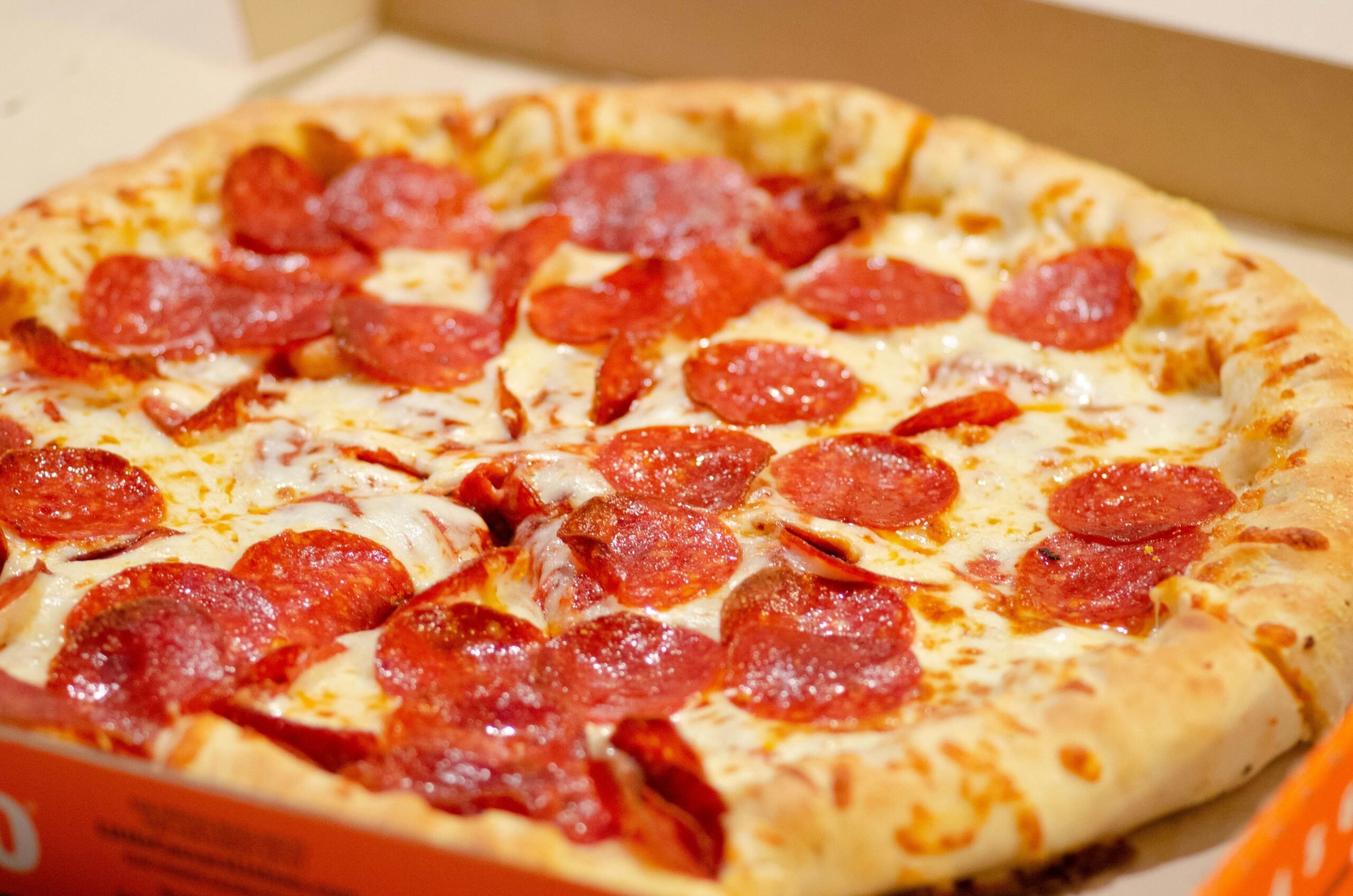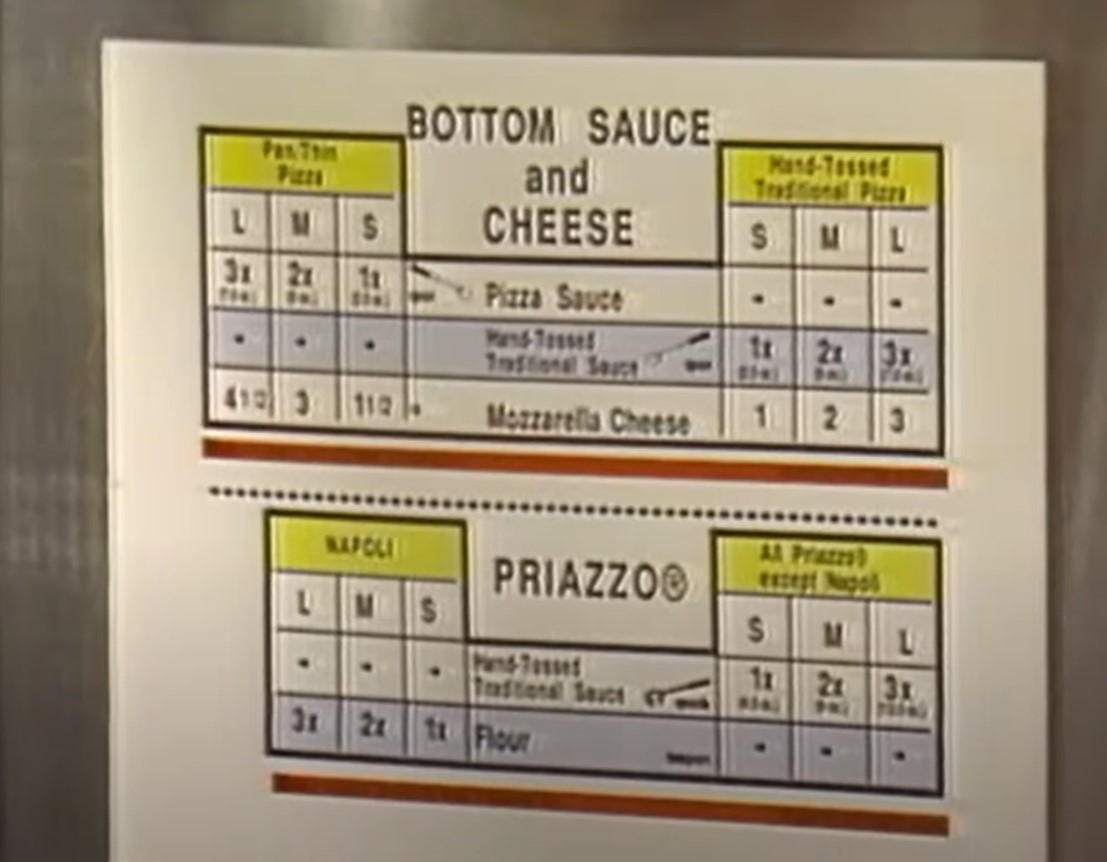Behavioral science is revolutionizing pizza ordering by harnessing psychological principles to influence consumer choices and enhance satisfaction. Insights into food cravings and emotional states are used to create customized pizza options that cater to individual preferences and health goals. Additionally, decision framing techniques encourage customers to select healthier toppings while innovative voice assistants streamline the ordering process, improving both speed and accuracy. Emphasizing plant-based alternatives further aligns with contemporary consumer demands for healthier, sustainable choices. As the industry evolves, understanding these behavioral dynamics will reveal deeper connections between brands and their consumers. Exploring these trends can provide further insights into this transformation.
The Psychology of Food Choices
Understanding the psychology behind food choices reveals a complex interplay of biological, psychological, social, and economic factors that influence our eating behaviors.
Food cravings often emerge from the brain's reward system, associating high-calorie and palatable options with pleasure, which can lead to preferences that override dietary restrictions.
Biological determinants, such as hormonal balance and satiety signals, contribute to our responses to hunger and fullness, greatly shaping our dietary decisions. Hormonal balance is crucial in regulating hunger and satiety, affecting how we respond to food cues.
Psychological factors, including emotional states and stress, further complicate these choices, often resulting in unhealthy eating patterns.
Social influences, like cultural norms and peer pressure, exacerbate the challenge of maintaining healthy eating behaviors amidst competing cravings.
Therefore, understanding these intricate dynamics is essential for promoting healthier food choices.
Decision Frames and Food Customization
Decision frames greatly shape consumer behavior in the context of food ordering, particularly in the domain of pizza customization. The way options are presented—through decision framing—significantly influences customization preferences. For instance, menu items positioned at extremes attract twice as many selections compared to those in the middle, underscoring the impact of context on consumer decisions. Additionally, positive framing can encourage health-conscious choices, aligning with growing consumer demand for diverse and innovative toppings, such as non-traditional fruits or hot sauces. As pizza chains adapt their offerings to cater to these preferences, understanding behavioral science becomes essential for menu design, allowing operators to effectively nudge customers toward healthier and more sustainable options while satisfying their craving for personalized culinary experiences. This adaptation includes the incorporation of unique toppings, which enhances customer engagement and satisfaction.
The Role of Voice Assistants
Increasingly, voice assistants are transforming the landscape of pizza ordering by enhancing both efficiency and customer engagement. These conversational interfaces deliver significant voice assistant benefits, such as improved speed and accuracy in order processing while personalizing the customer experience.
| Feature | Voice Assistant Benefits | Impact on Customers |
|---|---|---|
| Speed and Accuracy | Rapid order processing | Fewer mistakes |
| Customer Experience | Engaging, human-like interaction | Increased satisfaction |
| Operational Efficiency | Automation of order handling | Quicker service, no queues |
| Market Adoption | Widely implemented by major chains | Competitive edge in the market |
The integration of AI-driven solutions not only streamlines operations but also allows pizzerias to adapt to rising customer expectations, ultimately leading to enhanced satisfaction and loyalty. This is exemplified by Jets Pizza's expansion into the use of advanced voice AI technology to improve their ordering process.
Power Dynamics in Ordering
The evolution of voice assistants has greatly reshaped customer interactions in pizza ordering, paving the way for broader discussions on power dynamics within the digital ordering landscape.
As 80% of Domino's customers opt for digital platforms, technology integration has become essential for customer empowerment and delivery precision. Innovations like Pinpoint Delivery enhance ordering flexibility, allowing customers to define exact delivery locations, thereby elevating consumer engagement.
In addition, AI influence streamlines operations, utilizing data to tailor marketing efforts and improve service quality.
Partnerships, such as that between Pizza Hut and Beyond Meat, reveal how collaboration fosters innovative solutions, addressing diverse dietary preferences.
This digital transformation not only enhances user experience but also positions customers as central figures in the ordering ecosystem.
Health Goals vs. Dietary Desires
Steering through the complexities of health goals and dietary desires presents a unique challenge for consumers in today's diverse food landscape.
As health awareness rises, pizzerias are responding by offering healthier options, such as fresh, local ingredients and diverse dietary alternatives like gluten-free and low-carb crusts.
Customization empowers consumers with dietary flexibility, enabling tailored orders that align with individual health objectives.
However, the overavailability of high-calorie foods complicates these choices, often leading to dietary variability that can hinder weight management.
To navigate this, moderation and portion control become paramount.
Emergence of Plant-Based Pizza
As consumer preferences evolve, plant-based pizza is carving out a significant niche in the food industry. The increasing demand for healthier, environmentally sustainable options has prompted major pizza chains to embrace plant-based innovations, expanding their menus with diverse vegan toppings.
This trend reflects a broader shift as consumers seek alternatives that align with health-conscious and ethical values. The introduction of plant-based pepperoni, cashew cream, and vegan parmesan cheese enhances flavor profiles while minimizing environmental impact.
Importantly, the vegan frozen pizza market is witnessing substantial growth, indicating a shift in consumer behavior. As franchises adapt to these trends, they not only cater to a wider customer base but also position themselves competitively in an evolving culinary landscape.
Consumer Interest in Alternatives
Exploring consumer interest in alternatives reveals a significant shift in pizza preferences, reflecting broader societal trends toward health, sustainability, and culinary diversity.
Nearly one-third of consumers now gravitate toward alternative crusts, with 41% of millennials expressing enthusiasm for healthier options. This movement includes a growing demand for minimal processing, as seen in the preference for crusts free from bromate and bleach.
Health-conscious ingredients, such as those found in Better For You (BFY) varieties, are increasingly sought after, with organic and gluten-free options becoming mainstream.
Additionally, innovative products, like grain-free pizza bites, cater to this demand, showcasing a clear consumer desire for transparency and quality in their food choices.
The landscape of pizza ordering is undeniably evolving.
Marketing and Framing Strategies
The impact of decision framing on consumer choices in pizza ordering is substantial, as it can markedly alter perceptions of value and desirability.
Furthermore, the integration of voice assistants into the ordering process introduces a new layer of engagement, allowing for a personalized experience that can further influence decision-making.
Understanding these dynamics is essential for developing effective marketing strategies that resonate with consumers and drive sales.
Decision Frame Impact
Significant evidence suggests that decision frames play an essential role in shaping consumer choices, particularly within the context of food ordering. The effectiveness of decision frames can drastically alter customer choice patterns, especially in pizza ordering scenarios.
| Framing Strategy | Consumer Response |
|---|---|
| Build Up (Add options) | Encourages healthy selections |
| Pare Down (Remove options) | Increases unhealthy choices |
| Positive Framing | Enhances appeal of healthier items |
Voice Assistant Engagement
Consumer decision-making has evolved beyond traditional methods, with voice assistant engagement emerging as a pivotal avenue for enhancing the pizza ordering experience.
AI-driven systems, such as those employed by Anthony's Coal Fired Pizza and Domino's, leverage voice interaction to streamline customer engagement, facilitating seamless and efficient ordering processes.
These platforms utilize advanced speech recognition and natural language processing to accurately interpret customer preferences, enabling personalized recommendations based on historical data.
Additionally, the integration of voice biometrics guarantees secure transactions, reducing fraud risks.
Optimizing Pizza Orders
In today's competitive food landscape, optimizing pizza orders has become essential for enhancing customer satisfaction and boosting sales.
The integration of behavioral science principles allows pizzerias to refine their offerings through:
- Algorithmic Distribution: Utilizing algorithms like the Modified Fisher Market Clearing guarantees equitable and efficient topping preferences among customers.
- Consumer Choice Framing: Allowing customers to build or customize their orders encourages healthier options and satisfaction.
- Personalized Experiences: Image-based menus and mobile readiness enhance user engagement, greatly increasing conversion rates.
Understanding Slice Consumption
Understanding slice consumption requires an examination of sharing dynamics and portion control strategies that influence how pizza is enjoyed among consumers.
Research indicates that social interactions during pizza meals can lead to variations in slice allocation, impacting overall consumption patterns.
Additionally, effective portion control can enhance satisfaction while minimizing waste, highlighting the importance of mindful eating behaviors in the context of pizza ordering.
Slice Sharing Dynamics
A considerable aspect of pizza sharing dynamics lies in the complex interplay between perceived slice size and individual eating behaviors. Understanding this relationship can enhance slice distribution and improve sharing etiquette among diners.
Remarkably, consider the following:
- Perceived Portion Sizes: Individuals perceive larger slices as more satisfying, influencing their consumption patterns.
- Behavioral Impact: Restrained eaters may consume more if they believe their slice is larger, while unrestrained eaters may reduce intake if they feel they've overeaten.
- Equal Angle Slices: Employing equal angle cuts guarantees fairness in topping distribution, promoting equitable sharing experiences.
These insights reveal that perceptions considerably affect pizza enjoyment, guiding strategies for more harmonious dining experiences while enjoying this beloved dish.
Portion Control Strategies
While effective portion control strategies are essential for managing slice consumption, they also play a pivotal role in enhancing the overall dining experience. Ingredient standardization through consistent measurement fosters familiarity and satisfaction among customers, reducing the likelihood of overconsumption. Utilizing tools such as scales, measuring cups, and portion charts guarantees the accuracy of each pizza's ingredients, ultimately leading to improved inventory management and minimized waste.
| Tool | Purpose |
|---|---|
| Scales | Weigh cheese and meats for consistency |
| Measuring Cups | Portion toppings accurately |
| Spoodles | Apply sauces evenly and efficiently |
| Portion Charts | Provide staff with clear measurement guidelines |
| Pre-Weighing | Enhance efficiency during busy periods |
These strategies not only optimize operational efficiency but also support a healthier dining culture.
Innovations in Pizza Offerings
As the culinary landscape evolves, pizza offerings are increasingly reflecting diverse consumer preferences and global influences, leading to innovative trends that redefine traditional concepts.
Importantly, the integration of flavored crusts and unique toppings has become paramount. Key innovations include:
- Varied crust alternatives such as cauliflower, pretzel, and gluten-free options.
- International flavor inspirations, transforming traditional street foods into pizza, like BBQ pulled pork and Korean-style varieties.
- Unique combinations, including Chicken Tikka Masala and Mediterranean-inspired pizzas, catering to adventurous palates.
These innovations not only enhance the pizza experience but also empower consumers, allowing them to explore a myriad of flavors while accommodating dietary preferences.
Consequently, these culinary advancements signal a promising future for pizza enthusiasts.
Trends in Consumer Preferences
Recent shifts in consumer preferences reflect a growing demand for plant-based options, driven by health consciousness and environmental considerations.
Additionally, the increasing integration of voice assistants in everyday life is influencing ordering behaviors, prompting consumers to explore new choices more effortlessly.
These trends not only highlight evolving dietary preferences but also underscore the importance of adapting marketing strategies to resonate with a more health-oriented and tech-savvy audience.
Plant-Based Demand Surge
The surge in demand for plant-based pizzas underscores a significant shift in consumer preferences, driven by an increasing awareness of health, environmental sustainability, and ethical considerations.
Key factors influencing this trend include:
- Health Consciousness: 70% of consumers seek plant-based alternatives for healthier eating.
- Environmental Impact: The desire for reduced carbon footprints prompts a shift towards sustainable food options.
- Ethical Consumption: Growing awareness of animal welfare is compelling consumers to explore plant-based innovation.
Major chains and local pizzerias alike are adapting to these preferences by expanding their menus to include vegan options.
This not only enhances consumer sustainability but also reflects a broader cultural movement towards healthier, more responsible food choices.
The market's evolution signifies a profound transformation in how we engage with food.
Voice Assistants Influence Choices
Voice assistants are rapidly transforming the landscape of consumer decision-making in the pizza ordering process. By leveraging choice architecture, these voice-activated technologies streamline the ordering experience, allowing customers to navigate options effortlessly.
Personalized recommendations, driven by voice incentives, enable AI to learn from past interactions, fostering tailored suggestions that resonate with individual preferences. This efficient communication eliminates the need for cumbersome interfaces, enhancing customer satisfaction and loyalty.
Additionally, brand-specific assistants, such as Domino's Dom, create a unique user experience that distinguishes businesses in a competitive market. As the food delivery industry adapts to these innovations, voice assistants are not just a convenience; they are pivotal in shaping consumer choices and promoting engagement in the evolving culinary landscape.
Health Trends Impact Ordering
As consumer preferences evolve, the demand for healthier pizza options is becoming increasingly pronounced. This shift reflects a desire for healthy indulgence that satisfies both cravings and nutritional needs.
Key trends influencing this evolution include:
- Health-conscious choices: 51% of consumers believe pizza can be both indulgent and nutritious.
- Customization opportunities: The rise of customizable pizzas allows patrons to align their orders with personal nutritional preferences.
- Diverse ingredient offerings: Growing popularity of plant-based toppings and whole grain crusts enhances nutritional balance.
The increasing focus on healthful ingredients signals a transformation in pizza menus, appealing particularly to younger generations.
As the market adapts to these preferences, innovative, balanced options will likely shape the future of pizza ordering.
Behavioral Science in Marketing
Understanding the intricacies of human decision-making is pivotal for effective marketing strategies. Behavioral science provides key insights, enabling marketers to implement strategies that resonate with consumers' emotional triggers and build trust. By leveraging behavioral nudges and personalized recommendations, businesses can enhance user engagement and foster consumer loyalty.
| Principle | Application | Impact |
|---|---|---|
| Behavioral Nudges | Encourage desired actions | Combat decision fatigue |
| Emotional Triggers | Craft compelling narratives | Drive habit formation |
| Marketing Ethics | Foster transparency and trust | Strengthen customer relationships |
Ultimately, integrating these principles guarantees marketing efforts are not only effective but also ethically sound, shaping a more personalized and engaging consumer experience.
Frequently Asked Questions
What Are the Nutritional Benefits of Beyond Pepperoni?
The nutritional value of Beyond Pepperoni includes low cholesterol, no added sugars, and plant-based ingredients, contributing to significant health benefits. Its formulation supports dietary preferences while addressing allergies, promoting a balanced, health-conscious lifestyle.
How Is Beyond Pepperoni Made?
Beyond Pepperoni is crafted through a meticulous production process, emphasizing thoughtful ingredient sourcing. This innovative approach harmonizes plant-based components to create a savory alternative, ensuring a satisfying culinary experience while promoting health-conscious choices for discerning consumers.
Can I Customize My Beyond Pepperoni Pizza?
Yes, you can customize your Beyond Pepperoni pizza according to your topping preferences. This aligns with current customization trends, offering a variety of sizes, crusts, and toppings to cater to diverse dietary needs and preferences.
What Are the Environmental Impacts of Plant-Based Pepperoni?
The environmental impacts of plant-based pepperoni include reduced water usage, lower greenhouse gas emissions, and a markedly smaller carbon footprint, aligning with sustainability practices that address climate change and promote healthier dietary choices for consumers.
Are There Gluten-Free Options Available With Beyond Pepperoni?
Approximately 1 in 100 individuals suffer from celiac disease, necessitating gluten alternatives. Beyond Pepperoni slices, crafted from pea protein and rice starch, cater to dietary restrictions, ensuring suitability for gluten-free consumers seeking plant-based options.




